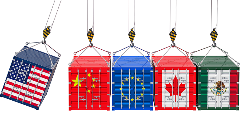News
India’s mithai market develops new ingredient and flavour profiles
18 Mar 2024Mithai is a hugely popular dessert and sweet snack in India and manufacturers are experimenting with unique ingredients, new flavour combinations, and healthier versions to capture new audiences.
According to TastePak, mithai is the Hindi and Urdu word for sweets that are often made from flour, milk, sugar, nuts and, in some cases, vegetables and lentils. They are traditionally flavoured with rose water, saffron, and cardamom.

One of the most significant changes in the mithai industry is the rise of creators experimenting with diverse ingredients, blending traditional sweets with global dessert forms. Classic Indian mithais like gulab jamun and jalebis are transforming into waffles with maple, jamun-studded French toasts, and pancakes. Consumers have the opportunity to customise sweetness levels, spice infusions, and syrups beyond rose and saffron.
As people become more health-conscious, mithai makers are incorporating natural sugar alternatives like jaggery and honey and millets like ragi, jowar, and bajra. In a nod to the permissible indulgence trend, these ingredient replacements offer a healthy alternative to traditional sweets. Eco-friendly packaging and zero-waste production goals are becoming increasingly common, reflecting a commitment to sustainability.
Festivals and seasons drive the market in India, with players increasingly moving to online and e-commerce platforms. The market for processed traditional foods in India has significant export potential, with large-scale, quality, and safe traditional sweet production playing a crucial role.
Several manufacturing processes, such as concentration, boiling, drying, extrusion, and rolling, can be used in India. However, machines that can adapt to such procedures and create the desired tastes and flavours are a significant challenge that needs to be addressed for the market to grow.
Mithai: Where sweets meet chocolate
Increasingly, brands are exploring flavour innovation in chocolate confectionery and implementing this in Mithai, traditional Indian sweets.
Market intelligence company Mintel found that a third of consumers are interested in mithai-flavoured chocolates compared to international dessert flavours. Manufacturers have the opportunity to cater to local preferences by infusing chocolates with flavours reminiscent of beloved mithais such as gulab jamun, rasgulla, and jalebi.
Brands can offer a modern twist on traditional delicacies by introducing limited edition assortment packs inspired by mithai flavours, enhancing consumer engagement. However, brands must recognise the diverse preferences across different regions in India and cater to these nuances to boost brand appeal. While flavours like gulab jamun may be more attractive to sweet shoppers in the West, those in the East may opt for rasgulla.
Moreover, chocolate brands can draw inspiration from local mithai stores that have successfully integrated desi flavours into their offerings, providing valuable insights into regional tastes.
New Mithai product developments
Khoya Mithai is expanding its product range, recently introducing the concept of luxury sweets. The Mithai sweet brand has recently launched an assorted box of Mithai in regular and sugar-free varieties to cater to health-conscious consumers. Arq Mithai has launched milk and dark chocolate truffles, bringing together India’s traditional sweet with confectionery.
Traditionally, mithai sweet shops conjure images of colourful and enchanting spaces filled with sweets. Bombay Sweet Shop aims to bring back the nostalgia and charm of traditional Mithai by reimagining Mithai flavours and textures. The local brand has introduced the Indie Bar, featuring layers of pepper caramel, coconut fluff, patissa/soan papdi (a local sweet delicacy), and dark chocolate. The brand’s chefs experimented with soan papdi and recognised its potential for inclusion in a chocolate bar.
The company has sought to “elevate nostalgia” and create gourmet sweets to meet today’s consumer demands. Bombay Sweet Shop’s Chocolate Butterscotch Barks is its best-seller, with a 60% repeat rate and contributing 30% of sales, while its assorted mithai box comes in at a close second.
In a relatively short period, Bombay Sweet Shop has seen significant sales increases, experiencing 120% monthly growth during Rakhi 2023 and 500% during Diwali 2022. The company anticipated 600% month-on-month growth for Diwali 2023.
Related news

Future F&B flavours favour exploration and explosive taste profiles
25 Mar 2025
Exploration and experimentation will define the future of flavour, according to Mintel, as consumers seek out taste profiles and textures that offer an adventurous eating experience.
Read more
Partnership plans to scale cultivated meat production
21 Mar 2025
Food technology innovator Ever After Foods (EAF) and multinational food leader Bühler are striving to overcome hurdles to access and accelerate the development of cultivated meat.
Read more
Global consumers enjoy food less and perceive it as less healthy
20 Mar 2025
Enjoyment of food and its perceived healthiness is dwindling among most global populations, according to findings from Gallup and Ando Foundation/Nissin Food Products.
Read more
Seafood set to ‘dethrone’ poultry as protein growth king
19 Mar 2025
Seafood is poised to surpass poultry as the leading contributor to global protein supply growth this year, according to Rabobank’s latest protein outlook.
Read more
Tariff volatility leaves food manufacturers in limbo
11 Mar 2025
Rapid US trade policy shifts and tariff escalations are creating uncertainty for food manufacturers and ingredient suppliers.
Read more
F&B industry hit with fresh greenwashing claims
26 Feb 2025
The food and beverage (F&B) industry is under fresh scrutiny amid claims of greenwashing, with Arla the latest company in the firing line.
Read more
Protein diversification: A massive missed market?
20 Feb 2025
Germany and the UK could be missing out on the massive market for alternative meats and proteins, with one new coalition calling for an end to the “steak-tofu struggle”.
Read more
Have scientists discovered a new tool to measure UPFs?
19 Feb 2025
Researchers have developed a new scoring system and database, compiling over 50,000 food items, of which over 1,000 are classified as ultra-processed.
Read more
China ramps up cultivated meat research with new innovation base
18 Feb 2025
China has opened its first fermentation and cultivated meat research centre in Beijing.
Read more
Most consumers lack trust in AI, but supplement users are ready to embrace the technology
14 Feb 2025
A survey of UK and US consumers found that most supplement users are willing to let AI make decisions on their behalf, but they also demand greater transparency.
Read more